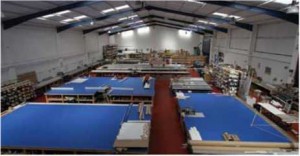Yes, blinds can affect student behaviour in several ways, both directly and indirectly. The impact…
Workplace temperature
 As winter approaches and the temperatures fall even lower, what might your obligations as an employer be regarding workplace temperatures.
As winter approaches and the temperatures fall even lower, what might your obligations as an employer be regarding workplace temperatures.
Regulation 7 of the Workplace (Health, Safety and Welfare) Regulations states: “During working hours, the temperature in all workplaces inside buildings shall be reasonable” in addition, the Management of Health and Safety at Work Regulations requires employers to make a suitable assessment of the risks to the health & safety of their employees, so temperature should be included within this assessment.
All business premises are varied in layout and function and because of this your assessment should be individual and specific to your own business. This will allow you to address any temperature issues that may arise.
Although there is no legal minimum or maximum temperature set for an indoor workplace, generally the temperature should provide reasonable comfort without the need for specific clothing. The HSE guidance recommends that workrooms should normally be maintained at a temperature of at least 16°C. If the work involves severe physical effort, involving lots of movement such as manual handling, etc. then the recommended minimum temperature should be at least 13°C.
 Of course, if these temperatures are impractical, e.g. due to the layout of the premises or a space where vehicles can enter the work area, then employers are required to take reasonable steps to achieve a temperature which is as close as possible to comfortable.
Of course, if these temperatures are impractical, e.g. due to the layout of the premises or a space where vehicles can enter the work area, then employers are required to take reasonable steps to achieve a temperature which is as close as possible to comfortable.
These steps could include:
- Insulating hot pipes or flooring as appropriate
- Providing air conditioning, ventilation or fans
- Shading windows with curtains or blinds
- Provision of localised heating or cooling, as appropriate.
Of course, sometimes it will be difficult to maintain these temperatures as it may be that the workplace needs to have open air access or needs to have the temperature at a certain level. If this is the case your risk assessment should consider additional measures such as:
- Ensuring employees take regular breaks to allow them to warm up/cool down
- Task rotation
- Limiting the amount of time employees may be exposed to uncomfortable temperatures
- Provision of facilities to make or obtain hot or cold drinks
- Providing suitable personnel protective clothing if the task requires it such as gloves/ hat, etc.
- Installing self-closing doors to retain heat/exclude drafts
- Means of exit for any walk-in cold storage you may have.
What about outdoor work?
When working outdoors, the weather can have an adverse effect on employee’s health and effectiveness. The Health and Safety at Work etc. Act 1974 provides an obligation on employers to ensure so far as is reasonably practicable, their employees’ health safety and welfare whilst they are at work. As well as your control methods above, you may want to consider the following for when your employees undertake outdoor work:
Cold weather
- mobile facilities for warm drinks
- are there any pre-existing conditions or health problems such as asthma or cardio vascular issues
- appropriate Personal Protective Equipment
- informing employees about working safely, especially if there is the risk of snow and ice, and what to do in the event of an accident
- allowing employees to change out of wet clothing as soon as possible
- Provision of information/training to employees so they can recognise signs of cold stress. These could include constant shivering, drowsiness and fatigue.
Warm weather
- Provision of sunscreen of at least SPF15 to protect against UV rays
- More frequent rest breaks/access to shaded areas
- Cold fluids to maintain hydration
- Provision of information/training to employees on the effect of sunlight on the skin to help them identify heat stress/skin damage. Skin damage is particularly pertinent to any staff with fair or freckled skin, fair hair or a large number of moles. Some symptoms of heat stress include a heat rash, severe thirst and fainting
Of course, one person’s perception of whether they are feeling too hot or too cold can differ markedly from another, and so your assessment may not be a perfect fit simply due to the number of environmental and personal factors involved, but by producing a constructive document, you should be able to provide a comfortable working environment for your employees.


